Occupational Environment Monitoring at the Binocular Manufacturing Factory
99,000 ₫
Note: The above price is calculated for one sample, and the price may fluctuate depending on the area of the environment to be monitored and market movements. For more accurate pricing support, please refer to the pricing table or contact our consulting staff directly.
Environmental monitoring of a binocular manufacturing factory is a session of collecting, analyzing, and evaluating workplace factors that may be harmful to workers’ health.
Table of Contents
Toggle1. Overview of the Binocular Manufacturing Factory
a. What is a binocular manufacturing factory?
A binocular manufacturing factory is a production facility specializing in the manufacturing and assembly of various types of binoculars, also known as optical binoculars or telescopes. Binoculars are observation devices used to enhance long-distance vision and provide clearer views of distant objects.

b. Production stages in a binocular manufacturing factory
In a binocular manufacturing factory, the production process may include the following stages:
- Material preparation: The factory purchases and prepares the necessary materials for binocular production, including main components such as optical tubes, lenses, focusing systems, frames, and other parts.
- Processing and fabrication: Components such as optical tubes, lenses, and other parts are processed and fabricated according to technical specifications and binocular design requirements.
- Assembly and inspection: The fabricated components are assembled into complete binoculars. The binoculars are then inspected for quality and performance to ensure functionality and accuracy.
- Testing and adjustment: The assembled binoculars are tested and adjusted to ensure optimal optical quality and observational performance.
- Maintenance and packaging: The finished binoculars undergo final maintenance and are packaged for shipment and distribution to customers.

c. Machinery used in a binocular manufacturing factory
In a binocular manufacturing factory, various machinery and equipment may be used for production and assembly. Some common types include:
- Tube cutting machine: Used to cut optical tubes to the required length, ensuring precision.
- Grinding and polishing machines: Used to process the surfaces of components such as lenses and optical tubes to ensure optical quality and performance.
- Tube shaping machine: Used to shape and size components of the binoculars accurately.
- Assembly machine: Used to assemble components such as lenses, optical tubes, focusing systems, and frames.
- Quality inspection machine: Used to inspect the optical quality and performance of binoculars after assembly.
- Imaging and inspection machine: Used to evaluate the image observed through the binoculars to ensure accuracy and quality.
- Packaging machine: Used to package and protect completed binoculars before shipping to customers.

d. Occupational diseases that may occur for workers in a binocular manufacturing factory
Workers in a binocular manufacturing factory may be exposed to environmental and job-related factors that could cause the following occupational diseases:
- Eye and nervous system diseases: Prolonged exposure to strong light or lasers during production and inspection may cause vision problems, eye strain, eye pain, and nervous system disorders.
- Respiratory diseases: Certain production stages may generate dust or chemical fumes that irritate or damage the respiratory system, causing pneumonia, asthma, allergic rhinitis, or other respiratory issues.
- Skin diseases: Contact with chemicals, solutions, or materials during production may cause skin irritation, dermatitis, allergic reactions, or other skin conditions.
- Ear, nose, and throat diseases: Environmental factors such as high noise from machinery or production processes can cause hearing loss or throat issues.
- Hand and neck disorders: Repetitive tasks or use of tools and machinery during production may lead to muscle strain, wrist inflammation, joint issues, and similar conditions.
To ensure the safety and health of workers, personal protective measures, safety management, and compliance with occupational health and safety regulations must be implemented in the binocular manufacturing factory.

e. Common types of binoculars on the market
There are many popular types of binoculars available on the market, including:
- Astronomical binoculars: Used for observing celestial objects such as stars, planets, satellites, and galaxies. Common types include compact, professional, and high-powered binoculars.
- Hiking or travel binoculars: Designed to be compact, lightweight, and portable for outdoor activities such as hiking, climbing, hunting, birdwatching, or traveling.
- Military binoculars: Used in military and security operations for long-distance observation, surveillance, intelligence gathering, and mission support.
- Investigation binoculars: Used for investigative or detective work to observe, collect evidence, or conduct remote surveillance.
- Navigation binoculars: Used for determining direction and distance from the observation point to targets, useful in navigation and surveying.
- Sports binoculars: Used in activities like hunting, golf, birdwatching, racing, or outdoor sports to provide better vision and accuracy in observation.
2. Overview of occupational environment monitoring services
a. What is occupational environment monitoring at a binocular manufacturing factory?
Occupational environment monitoring (or workplace environmental measurement) at a binocular manufacturing factory involves collecting, evaluating, and analyzing workplace environmental factors to implement timely measures, reduce environmental hazards to workers’ health, and prevent occupational diseases. Monitoring the workplace environment is a mandatory requirement for binocular manufacturing factories.
Occupational environment monitoring plays a crucial role in protecting and enhancing workers’ health because employees are the primary resource of a company and directly contribute to its profit. Workers who are regularly exposed to hazardous factors above allowed limits may suffer health impacts and develop occupational diseases.
REGISTER FOR OCCUPATIONAL ENVIRONMENT MONITORING SERVICE
b. Nam Viet’s occupational environment monitoring program
Nam Viet’s occupational environment monitoring program is developed by monitoring engineers specializing in occupational safety and environmental protection. Aimed at ensuring the health and safety of workers, the program uses modern measurement methods to monitor air quality, water, microclimate, physical factors, dust, and other workplace elements. This program is critical for maintaining a safe working environment and protecting workers’ health.
Additionally, Nam Viet’s monitoring program contributes to research and development of solutions to improve workplace environmental quality. With the dedication and professionalism of monitoring experts, Nam Viet’s exclusive program is a breakthrough in occupational safety and environmental management in Vietnam.

c. Standardization in workplace measurement procedures
Standardization in Nam Viet’s workplace measurement procedures is vital to ensure measurement accuracy and reliability. The program adheres to recognized standards and procedures issued by the Ho Chi Minh City Department of Health. This ensures that collected data is highly reliable for evaluating workplace environments and making informed decisions to protect workers’ health.
These standardized procedures also guarantee that measurements are performed by qualified monitoring specialists with years of experience, enabling managers and experts to trust the results from An Toàn Nam Việt and make precise, valuable decisions to safeguard both worker health and the environment.
By applying standardized measurement procedures, Nam Viet demonstrates its commitment to ensuring a safe working environment, protecting worker health, and contributing to the advancement of occupational safety and environmental management in Vietnam.
d. Reporting the monitoring results of the binocular manufacturing factory
Monitoring results are compiled according to Form No. 04, Appendix III issued with Decree 44/2016/ND-CP and are prepared in two copies: one copy is sent to the enterprise that contracts the monitoring service, and one copy is retained by the organization performing the monitoring.
The retention period of occupational environment monitoring records is indefinite, in accordance with legal regulations.

e. Frequency of occupational environment monitoring according to legal regulations
According to Clause 2, Article 18 of the Law on Occupational Safety and Health 84/2015/QH13, employers must conduct occupational environment monitoring to assess harmful factors at least once per year.
f. Deadline for submitting occupational environment monitoring reports according to legal regulations
The submission deadline is before December 31 each year. Enterprises at production facilities are required to submit occupational environment monitoring reports to the local Department of Health where the facility is headquartered and where employees work.
When there are changes in technology, production processes, or facility renovations/upgrades that may introduce new hazardous factors affecting worker health, enterprises must update their occupational health records and conduct relevant monitoring.
g. Penalties for violations of occupational environment monitoring by employers
According to Article 27 of Decree No. 12/2022/ND-CP dated January 17, 2022, regulating administrative penalties in labor, social insurance, and Vietnamese employees working abroad under contract:
- Clause 2: Fines ranging from 2,000,000 – 5,000,000 VND for employers who fail to publicly disclose monitoring results and hazardous factors to workers immediately after obtaining the results.
- Clause 3: Fines ranging from 20,000,000 – 40,000,000 VND for employers who fail to conduct occupational environment monitoring to control health risks as required by law.
- Clause 4: Fines ranging from 40,000,000 – 60,000,000 VND for employers who collude with monitoring organizations to commit fraud in monitoring activities, but not to the level of criminal liability.
3. Harmful environmental factors for workers in binocular manufacturing factories
There are several environmental factors that can be harmful to workers in binocular manufacturing factories, including:
- Dust and chemical fumes: During binocular production, dust may be released from metal processing or other materials used. In addition, the use of chemicals such as solvents, cleaning agents, or adhesives can produce fumes that may irritate the respiratory system or skin.
- Noise: Using machinery and equipment during binocular production can generate high noise levels, affecting hearing and causing psychological stress.
- Glare: Work in binocular manufacturing may require exposure to strong light, especially during inspection and assembly of small components. Glare can cause eye fatigue and affect vision.
- Temperature and humidity: Some production processes require strict temperature and humidity conditions to ensure product quality. Working in environments that are too hot, cold, or humid can affect workers’ health and comfort.
- Materials and chemicals: During production, certain materials and chemicals may irritate the skin, eyes, or respiratory system if not used or handled properly.
- Repetitive movements: Work in binocular production may involve repetitive tasks such as assembly, inspection, and packaging. Repetitive movements can cause strain and musculoskeletal problems, including injuries and degeneration.
REGISTER FOR OCCUPATIONAL ENVIRONMENTAL MONITORING SERVICE
4. Measures to improve the working environment in binocular manufacturing factories
To improve the working environment in binocular manufacturing factories, the following measures can be applied:
- Dust and chemical management: Ensure effective management of dust and chemicals. Use dust extraction systems and ventilation fans to reduce airborne dust. Ensure chemicals are safely stored and used, and implement control measures to minimize worker exposure to hazardous chemicals.
- Lighting adjustment: Provide appropriate natural and artificial lighting during work to reduce eye strain and improve productivity. Ensure work areas are sufficiently lit and avoid strong glare.
- Noise control: Apply soundproofing and insulation measures in the factory to reduce noise from machinery and equipment. Provide ear protection for employees working in high-noise environments.
- Temperature and humidity regulation: Ensure temperature and humidity in the working environment are maintained within a comfortable and safe range. Use air conditioning and ventilation systems to maintain ideal environmental conditions.
- Training and education: Train employees on occupational safety, use of personal protective equipment, safe work procedures, and measures to prevent occupational diseases. Provide guidance on proper use and maintenance of machinery and equipment.
- Equipment inspection and maintenance: Conduct regular inspections and maintenance of machinery and equipment to ensure safe and efficient operation. Implement timely repairs to reduce the risk of accidents and occupational diseases.
- Periodically organize occupational environmental monitoring in factories, collect and analyze harmful factors affecting workers, and adjust to reduce hazards to prevent occupational diseases.
5. Benefits of periodic monitoring in binocular manufacturing factories
An Toan Nam Viet provides businesses with excellent benefits when using occupational environmental monitoring services in accordance with Decree 44/2016/ND – CP on the management and control of harmful factors in the working environment affecting workers.
- Businesses can proactively control harmful factors in workshops or factories.
- Receive advice and recommendations on measures to reduce harmful factors and improve the quality of the working environment.
- Indirectly protect human resources, the key factor in business development.
- Reduce the impact of occupational diseases on human health, thereby minimizing future treatment costs.
- Improved worker health leads to better product quality and stable production output.
- Ensure compliance with labor safety laws, avoiding legal risks.
- Enhance reputation and professionalism in all aspects, thereby elevating the business’s brand.
Nam Viet’s environmental monitoring service is a solution to minimize the impact of occupational diseases, contributing to a clean and high-quality working environment.

6. National occupational environmental monitoring center
Occupational Environmental Monitoring Center of Nam Viet is a professional unit for monitoring and measuring the quality of the working environment throughout all provinces and cities in Vietnam. With a team of experienced monitoring specialists, the center uses modern measuring equipment to ensure accuracy and reliability.
In addition to providing monitoring services, the center assists customers in planning, handling, and tracking occupational environmental issues. With the motto “customer-centered,” the center prioritizes customer satisfaction, meets all customer needs, and is committed to providing the best solutions for businesses.
REGISTER FOR OCCUPATIONAL ENVIRONMENTAL MONITORING SERVICE
With investments in technology, equipment, and human resources, Nam Viet’s monitoring center has become a reputable unit in the field of occupational environmental monitoring in Ho Chi Minh City with the following objectives:
- We always value our brand reputation and the quality of our service products.
- We provide customers with the best and most suitable solutions possible.
- Together with a team of experienced Masters and Engineers, we aim to protect the environment and benefit businesses.
- By working with Nam Viet Environmental Monitoring team, companies receive professional services from experts and the best cost advantages.
The occupational environmental monitoring process at Nam Viet includes the following basic steps:
- Before conducting monitoring, our company ensures all machinery and equipment are adjusted and calibrated according to legal regulations.
- Strictly implement the occupational environmental monitoring procedures as committed to the Department of Health.
- Accurately report occupational environmental monitoring results to employers.
- If monitoring results indicate unsafe conditions for workers, Nam Viet will provide remedial solutions, and the employer will implement the following:
- Apply measures to improve working conditions to minimize harmful factors and prevent occupational diseases.
- Organize health checks to detect early occupational and work-related illnesses for workers in unsafe environments.
- Provide material compensation for workers according to labor laws.

7. Occupational environmental monitoring service quotation
To help businesses conduct occupational environmental monitoring professionally and effectively, Nam Viet provides customers with a high-quality and reasonably priced service quotation for occupational environmental monitoring.
- Our quotation provides detailed information on the costs of the monitoring services offered, including transportation, measurement, analysis, and reporting fees. Customers can be fully assured of the accuracy and reliability of the monitoring reports we provide.
- We commit to offering the most competitive and reasonable prices on the market and are always ready to promptly answer all questions regarding monitoring services professionally.
- With Nam Viet’s quotation, customers can easily choose service packages that meet their needs. We are committed to delivering the highest satisfaction with professional service quality.
No comments yet

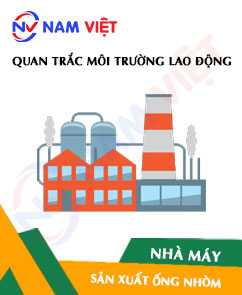
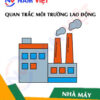
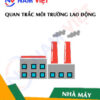

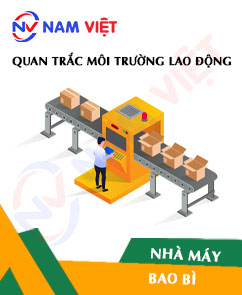
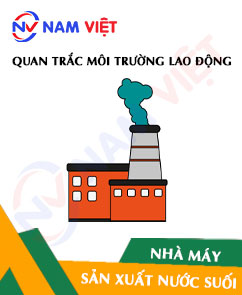

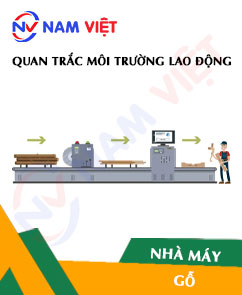


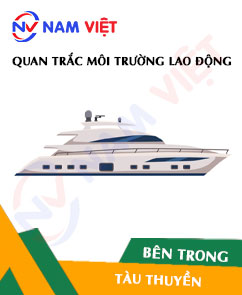
Review Occupational Environment Monitoring at the Binocular Manufacturing Factory
There are no reviews yet.